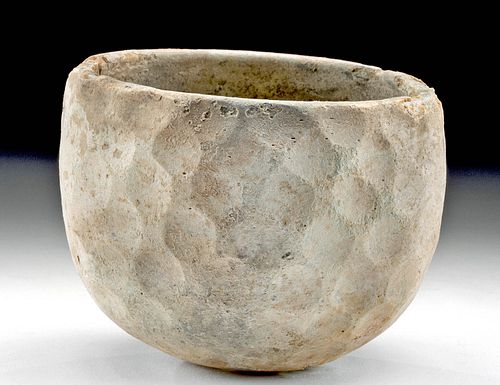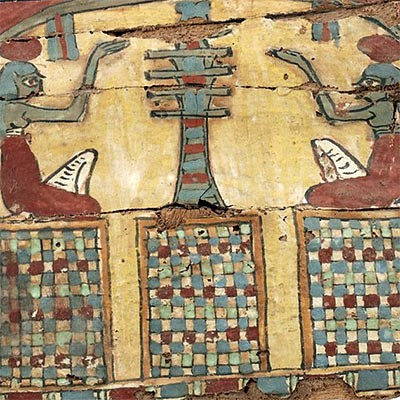Sasanian Glass Bowl w/ Dimpled Pattern
Lot 53
About Seller
Artemis Gallery
686 S Taylor Ave, Ste 106
Louisville, CO 80027
United States
Selling antiquities, ancient and ethnographic art online since 1993, Artemis Gallery specializes in Classical Antiquities (Egyptian, Greek, Roman, Near Eastern), Asian, Pre-Columbian, African / Tribal / Oceanographic art. Our extensive inventory includes pottery, stone, metal, wood, glass and textil...Read more
Categories
Estimate:
$600 - $900
Absentee vs Live bid
Two ways to bid:
- Leave a max absentee bid and the platform will bid on your behalf up to your maximum bid during the live auction.
- Bid live during the auction and your bids will be submitted real-time to the auctioneer.
Bid Increments
| Price | Bid Increment |
|---|---|
| $0 | $25 |
| $300 | $50 |
| $1,000 | $100 |
| $2,000 | $250 |
| $5,000 | $500 |
| $10,000 | $1,000 |
| $20,000 | $2,500 |
| $50,000 | $5,000 |
| $100,000 | $10,000 |
| $200,000 | $20,000 |
About Auction
By Artemis Gallery
Jul 30, 2020
Set Reminder
2020-07-30 10:00:00
2020-07-30 10:00:00
America/New_York
Bidsquare
Bidsquare : Ancient / Ethnographic From Around the World
https://www.bidsquare.com/auctions/artemis-gallery/ancient-ethnographic-from-around-the-world-5382
Ancient art from Egypt, Greece, Italy and the Near East, as well as Asian, Pre-Columbian, Native American, African / Tribal / Oceanic, Spanish Colonial, Russian Icons, Fine art, much more! All categories, all price ranges... all legally acquired and guaranteed to be as described or your money back. Artemis Gallery info@artemisgallery.com
Ancient art from Egypt, Greece, Italy and the Near East, as well as Asian, Pre-Columbian, Native American, African / Tribal / Oceanic, Spanish Colonial, Russian Icons, Fine art, much more! All categories, all price ranges... all legally acquired and guaranteed to be as described or your money back. Artemis Gallery info@artemisgallery.com
- Lot Description
Ancient Near East / Central Asia, Sasanian (Sassanian/Sasanid) Empire, ca. 3rd to 6th century CE. A beautiful bowl formed from semi-translucent glass of a yellow-green hue that was blown in a mold to create the attractive rows of honeycomb-like dimples coursing across the surfaces. The bowl has a stable base and tall walls that culminate in a thick rim that hangs slightly over the basin, and the surfaces are very smooth. A lovely example! Size: 3.75" W x 3" H (9.5 cm x 7.6 cm)
Faceted bowls such as this one are characterized by uniformity of shape, size, and arrangement of the facets in four or five rows. They represent the most widespread type of late Sasanian glass vessel, found in excavations of Mesopotamian and Iranian sites dating from the fifth to seventh century CE. Some examples, probably carried along the Silk Road to the Far East by Persian merchants and traveling embassies, have been found in Japanese contexts, notably in the sixth-century tomb of the emperor Ankan and in the Shoso-in Treasure at Nara, which was assembled by the emperor Shomu in the eighth century.
For two similar examples, please see "Solid Liquid: Greek, Roman, Byzantine and Islamic Glass." Fortuna Fine Arts, Ltd., 1999, p. 116, figs. 208-209.
Provenance: private East Coast, USA collection, aquired prior to 2008
All items legal to buy/sell under U.S. Statute covering cultural patrimony Code 2600, CHAPTER 14, and are guaranteed to be as described or your money back.
A Certificate of Authenticity will accompany all winning bids.
We ship worldwide and handle all shipping in-house for your convenience.
#139756Minor nicks to rim and base, with light encrustations, and some pitting along base, otherwise intact and very good. Smooth surface throughout.Condition
- Shipping Info
-
All shipping is handled in-house for your convenience. Your invoice from Artemis Gallery will include shipping calculation instructions. If in doubt, please inquire BEFORE bidding for estimated shipping costs for individual items.
-
- Buyer's Premium



 EUR
EUR CAD
CAD AUD
AUD GBP
GBP MXN
MXN HKD
HKD CNY
CNY MYR
MYR SEK
SEK SGD
SGD CHF
CHF THB
THB
















